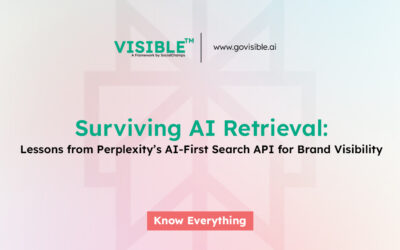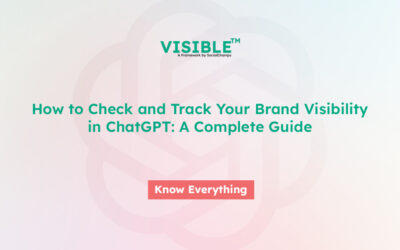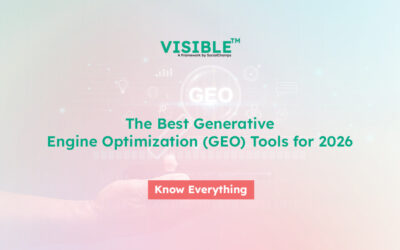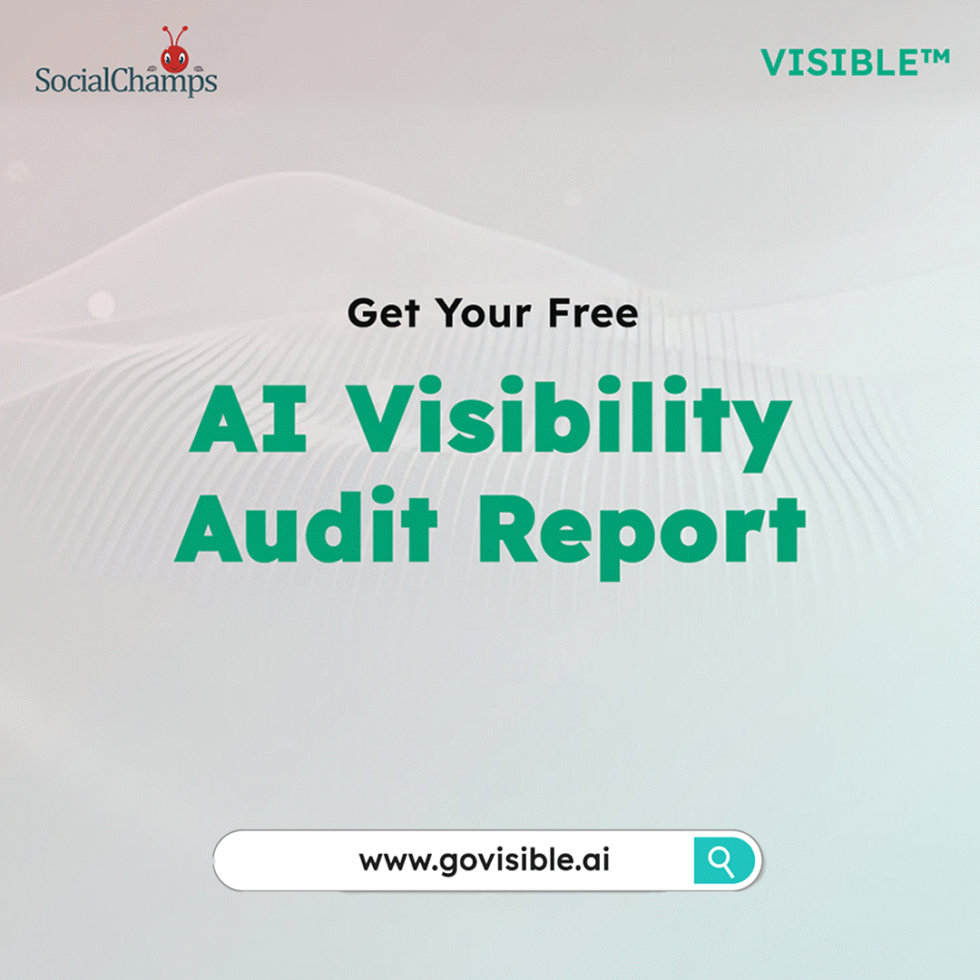What is AI Search Intent?
AI Search Intent refers to the underlying goal or purpose behind a user query within an AI-powered search environment. Unlike traditional search intent (which relied on keyword patterns), AI Search Intent is deduced from semantic meaning, context, and the interaction model of LLMs. It’s how generative engines determine what “answer” to serve, not just what link to rank.
Why Search Behavior Has Changed in the AI Era
AI-first engines like ChatGPT, Perplexity, and Google’s SGE aren’t returning lists—they’re resolving answers. This paradigm shift means the way users frame queries now leads to multi-turn, answer-seeking interactions. According to Think with Google, over 70% of Gen Z users expect a conversational search experience, not a static list (source: thinkwithgoogle.com).
Introducing Intent-to-Answer Mapping
Intent-to-Answer Mapping is our proprietary methodology for aligning content formats to the inferred intent of AI-driven queries. The VISIBLE™ Platform analyzes how queries manifest across the AI search journey, ensuring content satisfies the full arc of user expectations—not just keywords., ensuring content satisfies the full arc of user expectations—not just keywords.
We believe this is the missing blueprint for modern content teams—one that is actively operationalized through our proprietary GEO Score, Intent Density Analysis, and the Entity Depth Index. These tools help us (and our partners) ensure that every piece of content is intentionally structured for the right AI Search Intent.: aligning what you say to what AI believes the user means.
Read more on Intent-to-Answer Mapping
The 4 Core Types of AI Search Intent (The I.N.C.T. Model)
To simplify interpretation of the VISIBLE™ Framework, here’s a breakdown of the I.N.C.T. Intent Model in a structured format:
| Intent Type | Query Signals | Content Strategy Match | Real-World Example |
|---|---|---|---|
| Informational | “What is…”, “How does…”, “Why do…” | Explainers, whitepapers, educational blogs | HubSpot Academy |
| Navigational | “Go to…”, brand names, site-specific queries | Branded landing pages, login portals | Nike |
| Comparative | “X vs Y”, “Best tools for…”, “Top 10…” | Grids, product matrices, comparison blogs | G2.com |
| Transactional | “Buy now”, “Schedule demo”, “Get quote” | Checkout pages, demo CTAs, pricing pages | Shopify |
Introducing the I.N.C.T. Intent Model, a proprietary VISIBLE™ Framework categorizing the four foundational AI search intents: Informational, Navigational, Comparative, and Transactional.
Informational Intent: Teaching the Model
We at VISIBLE™ define Informational Intent through queries like: “What is…”, “How does…”, or “Why do…”
These queries aim to educate the AI. Brands must become teachers.
Example queries:
- “What is carbon-neutral shipping?”
- “How does blockchain impact retail?”
Content match: Thought leadership, explainers, whitepapers.
Navigational Intent: Brand-Driven Guidance
When users ask: “Go to…”, “Find…”, or reference specific brands.
These are signals of brand familiarity or loyalty.
Example queries:
- “Nike trail running shoes site”
- “HubSpot blog login”
Content match: Branded landing pages, login portals, product navigators.
Comparative Intent: AI as Evaluator
When users ask: “Best X vs Y”, “Top 10 tools for…”, or request side-by-side comparisons.
This is where AI turns analyst. Your content must help the model evaluate trade-offs.
Comparative Intent demands structured, data-backed content.
Example queries:
- “Notion vs. Evernote for teams”
- “G2 Crowd CRM rankings 2025”
Content match: Grids, matrices, reviews, side-by-side specs.
Transactional Intent: Readiness to Act
When users ask: “Buy now”, “Schedule demo”, or “Get a quote.”
These are action signals. Conversion is one click away.
Example queries:
- “Buy Meta Quest 4 online”
- “Get demo of enterprise LMS”
Content match: Checkout pages, demo CTAs, pricing calculators.
Real Brand Examples Across Each Intent
Informational: HubSpot
HubSpot’s Academy content dominates informational queries like “What is inbound marketing?” Their FAQ-rich content architecture feeds LLM training sets.
Navigational: Nike
Nike’s site search traffic surges for direct queries like “Nike app login” or “Nike store near me”, reinforcing its brand-led navigational positioning.
Comparative: G2
G2.com structures reviews to allow generative models to extract side-by-side insights instantly. Their “Best CRM software” grid is often quoted verbatim by AI search tools.
Transactional: Shopify
Shopify’s checkout UX, paired with intent-aligned product pages, ranks high on AI-generated “Buy now” or “Launch online store” prompts.
How VISIBLE™ Maps and Scores Search Intent in GEO
Smart Indexing of AI Questions
The VISIBLE™ Platform captures how AI models semantically classify questions using Smart Indexing. We don’t just track keywords—we track intentions.
Intent Density Analysis and GEO Score
The VISIBLE™ Platform uses Intent Density Analysis to reveal how concentrated a piece of content is around a specific AI search intent. how concentrated a piece of content is around a specific AI search intent. Combined with the GEO Score, the VISIBLE™ Platform enables brands to see how well their assets rank within the context of generative search.
Why Intent Clarity Is the New Content Moat in AI-First Search
Intent isn’t just a signal—it’s the structure beneath all generative outputs. If your content can’t be mapped to intent, it can’t be surfaced in AI journeys. In a world where AI answers instead of linking, the clarity of your intent becomes your content moat.
The Future of Search is Intent-First
GEO isn’t an evolution of SEO. It’s a replacement layer.
As we move into an AI-first internet, aligning content with AI Search Intent becomes non-negotiable. Intent-to-Answer Mapping ensures your brand is not only visible—but understood.
Want to see how your content aligns to AI search intent?
Schedule a GEO Diagnostic






